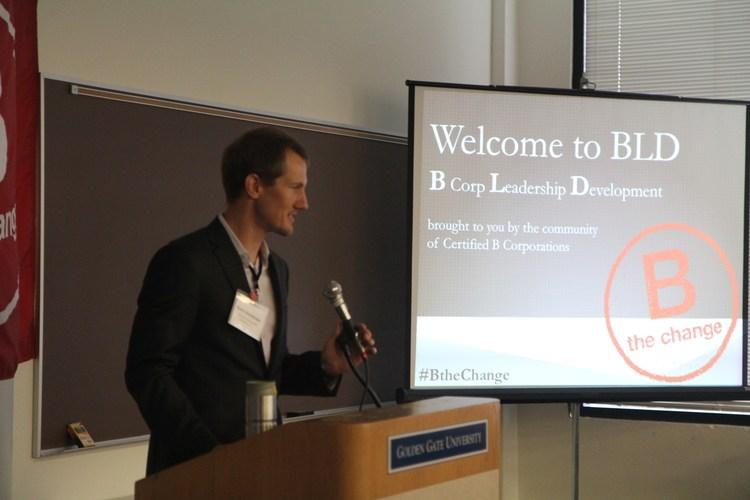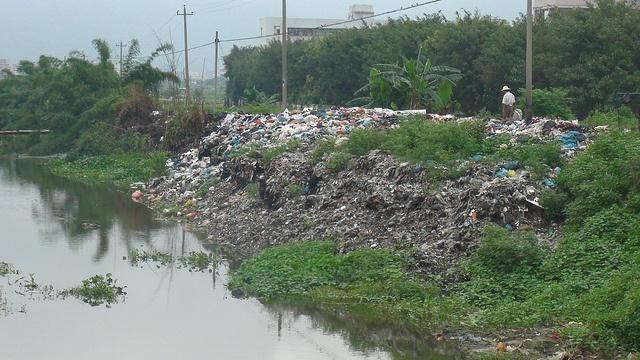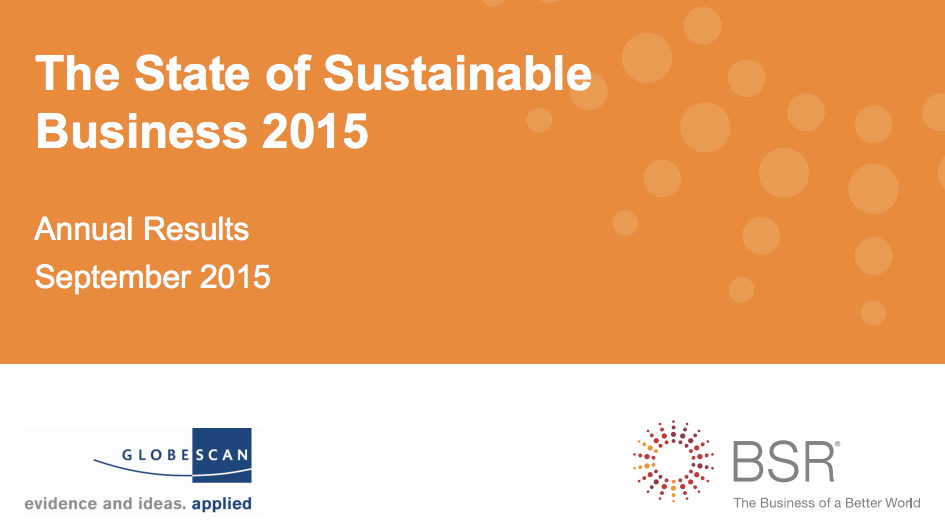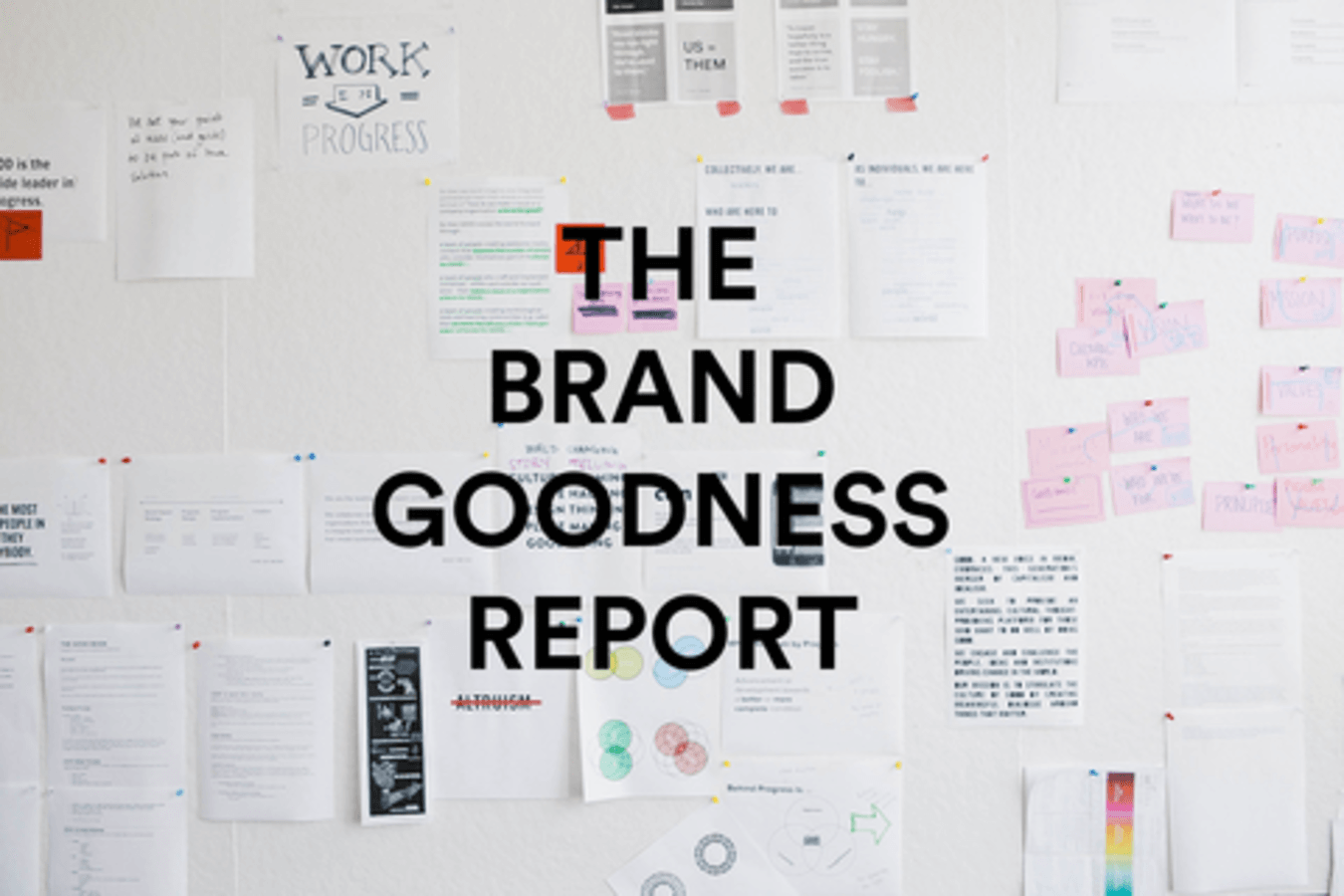Role Businesses Should Play in Social Change


By Cecile Blilious
As we move further into the 21st century, the global community faces an array of difficult challenges. Over one billion people are struggling with water scarcity, a problem particularly salient in California due to the ongoing drought. Alternatively, in places like Africa, the fight against dangerous diseases such as Ebola has captured the world’s attention. In order to overcome the challenges that face us all, we all must accept the responsibility to act. We each have a role to play — every individual, every city, every country and every business.
The question then becomes, how can we all contribute to overcoming these challenges? As individuals we are best positioned to act as independent, helpful agents; cities are best positioned to create effective local solutions; and national governments are best positioned to enact guiding legislation and provide assistance. Technology startups and businesses meanwhile, are particularly well suited to use innovation to create effective solutions to global challenges.
To date, tech start-ups have shown flashes of enormous potential. Green-technology startups have made it possible to recycle previously unsalvageable material, and biotech companies are revolutionizing medicine for first and third world ailments. While these accomplishments have made a notable effect, much more can be done to foster an environment wherein tech startups dedicate themselves to creating socially minded solutions.
Through proper investment strategies and corporate practices, tech companies can be encouraged to actualize their potential and foster social improvements that resolve global challenges, as I will outline below:
Invest in social returns as well as financial returns
Impact investing strategies have turned the focus to the social benefits of investments, without losing any emphasis on financial success. Impact investment firms assess returns in both profitability and measurable, global impact. This relatively new form of investing has grown quickly. In 2014, $60 billion was invested with impact, a 30% increase from 2013, and annual investment into impact funds is expected to increase more than six fold within the next ten years —with projections indicating that it will surpass $400 billion per year by the end of the decade. Moreover, impact investments are targeting and achieving market-rate returns at an 80% clip.Merge the mission
A challenge often encountered by startups is a singular focus on finances, causing them to lose focus of the overall big picture, including improving a company’s product and social mission. From the outset, a company’s business model should be focused on achieving all of its missions, from making a profit, going public, perfecting a product or maximizing social impact. This model should be consistently assessed throughout an organization’s lifetime. If a company makes changes to become financially stronger, constant check-ups should be taken to ensure that none of its social goals are abandoned, and vice versa.The need for merged goals applies to investors the same way it does for corporate leaders. When investors understand that social returns and financial returns are equally vital within a company’s activities, they allow the company to maintain focus on its social agenda. The success of companies that strive toward these merged goals has contributed to the continued growth of impact investing. For tech startups in particular, social benefits and financial profits easily come hand-in-hand, and they have drawn attention from Impact Investors.
Effective social assessment
In order to most effectively quantify and measure social returns, companies need to use the resources available to them, including B-Corp certification, which should be pursued as early as possible. While maintaining B-Corp certification, other impact measurement tools, such as Sinzer, can provide valid measures of social impact. Additionally, internal monetization standards and tools should be created to complement these external resources, whether through data tracking or effective polling of a target population. By using a combination of these tools, leadership and investors can gain an accurate picture of a company’s ability to gain social “returns” together with financial returns. Measurement tools set a standard for a company and are critical in providing company leadership with a more in-depth understanding of their performance. This allows them to make necessary changes, and verifiably demonstrate success.Conclusion
Technology startups and businesses are positioned at the intersection of ingenuity and aggressive growth strategies. The world cannot afford to overlook the technologies that these companies are creating. While impact investing has had a strong beginning, we need more investors to adopt this model to maximize the social impact generated by technology startups.While many entrepreneurs create technologies of minimal social impact, others do great good. When socially minded businesses and investors execute the proper strategies, they can spread an impact that benefits us all.
Image credit: Flickr/Rodrigo Soldon
Cecile Blilious is the co-founder and managing partner of Impact First Investments, an Israeli impact investment firm. Cecile has extensive experience managing foundations focused on creating social good and has served as CEO or in leadership positions at a number of Israeli high-tech companies.
5 Tips to Becoming a B Corp Consultant


By Julie Fahnestock
Ryan Honeyman didn’t necessarily intend to be the B Corp expert. If you told the Ryan Honeyman of 2008 with his master's in criminal justice that in five years he would quit his job, write a book, and be named the 2014 B Corp MVP, he might have asked, “‘B’ Corp? Why not an ‘A’ Corp?”
To be an expert is to be just a few steps ahead. The Ryan Honeyman of 2015 knows B Corp consulting is about asking questions and finding ways to create meaningful, long-term value. Not long into his career as a B Corp consultant, many requests from sustainability-minded professionals came his way asking for advice on networking with B Corps, turning the B Impact Assessment into a business model and feeding a family while doing so. Ryan realized that to dramatically expand the B Corp movement, there was an opportunity to create a training and mentorship network for aspiring B Corp consultants.
Together with Conscious Brands, an awesome, Canadian-based, sustainability consulting firm, he launched a webinar series called “Secrets of B Corp Consulting,” aimed at equipping participants with tools, framing and expertise in this burgeoning field.
As of now, two cohorts have completed six class hours and several, albeit always optional, homework assignments. Ryan and his colleagues at Conscious Brands think that the trainees are ready to hit the ground running and help companies make more meaningful impact. Here are five insider tips from the Secrets of B Corp Consulting, which I compiled as a member of the September 2015 cohort:
1. B Corp certifications are only 50 percent of the business opportunity
Christian Greico, president of Optimus One & Secrets of B Corp Consulting AlumniRyan said that when he first started Honeyman Consulting, he made the mistake of chasing B Corp certifications, neglecting to develop long-term, client relationships. The more meaningful approach, he has learned, is to create deeper value for clients through other activities such as PR, carbon counting projects and half-day, employee engagement training. This is also true for other B Corp consulting companies. For Conscious Brands, B Corp certification makes up roughly one-third of their revenue stream.
2. Get going when you’re 80 percent ready.
Nadine Martel, sustainability consultant, Bronson Consulting Group & Secrets of B Corp Consulting AlumnaAs management consultant Alan Weiss puts it, “When you are 80 percent done, then move forward. The final 20 percent is dysfunctional.” When Ryan first started his consulting business in 2011, he knew he needed to find a way to provide long-term value for his clients quickly and effectively. He didn’t have time to refine his expertise and then start consulting. Ryan says that the goal is to trust your gut, constantly tweak and iterate on new approaches, and admit when you don’t have the answer.
3. You don’t need to be an expert in sustainability to help businesses improve impact
Yours Truly, Julie Fahnestock, founder of B Storytelling & Secrets of B Corp Consulting AlumnaRyan says that “B Lab calls itself a lab because they aren’t pretending to have all of the answers.” In fact, one of the most interesting things for me during this course was that Ryan said he had only mentioned GRI and LEED once and never used them. He says that the value that the B Impact Assessment provides is that you don’t need a long, deep history of sustainable knowledge to help businesses improve their social and environmental performance.
4. Use the B Impact Assessment to get a baseline
Christian Greico, president of Optimus One & Secrets of B Corp Consulting Alumni“Regardless of how the client proceeds,” says Greico, “the B Corp model is such a strong framework.” Whether or not the client decides to pursue or finalize B Corp certification, the assessment outlines the great impact they are making and where they have room to improve. Ryan says that you should walk your clients through the Quick Start Guide in The B Corp Handbook and set a goal to get a baseline via the B Impact Assessment in 90 minutes or less.
5. Contextualize the value of the B Corp model.
Nadine Martel, sustainability consultant, Bronson Consulting Group & Secrets of B Corp Consulting Alumna“It’s important to find what resonates with each business. It could be attracting and retaining top talent, or it could be demonstrating leadership in sustainability or ensuring the values and mission are embedded and protected in the business’ legal structure,” says Martel. “Each message will depend on the type of business, its current situation and who you are speaking with. When consulting with businesses, it makes sense to select two or three points explaining the benefits of B Corp that will resonate with the business to whom you are pitching.”
For more secrets, check out the October/November webinar series the Secrets of B Corp Consulting. Read more about it on Just Means.
Julie Fahnestock is the Founder and Sustainability Storyteller at B Storytelling, a content development company specifically designed to help popularize the good happening through business. They do this by helping Benefit Corporations and other social enterprises identify, build and leverage their brands. Julie has an MBA in Managing for Sustainability from Marlboro Graduate School and she lives in West Palm Beach, Florida.
Two-thirds of UK investors ignorant of ESG performance of their investments


A new study reveals that almost two-thirds of investors don’t know whether the activities of industries or companies they are investing in are ethical or not.
According to the survey by Triodos Bank, 63% of investors don’t know whether the activities of the companies or industries they are investing in are ethical, meaning that many are potentially funding practices which go against their personal views. The findings also show that only a quarter (25%) of people say they know if their investments are ethical.
The survey also shows that the vast majority (85%) of investors would act if they felt their investments conflicted with their personal ethical preferences. As part of the research, Triodos Bank asked respondents to highlight practices which would stop them investing financially in a particular company, fund or pension.
The top five are human trafficking (70%), forced/child labour (67%), pornography (49%), animal testing (45%) and arms/munitions (41%).
The research also showed an appetite for ethical investment, with 71% of investors saying they want more of their pensions and investments in environmental and social sectors. Almost half (46%) of investors would like more of their pension or investment products to be invested in renewable energy while 43% would like to invest in healthcare and 37% in sustainable businesses.
Huw Davies, head of personal banking at Triodos Bank, comments: “A big part of the problem is the lack of transparency in financial products – it should be much easier for the average investor to find out which companies and activities their money is financing so they can make informed decisions."
Sweden on Target to Become First Fossil Fuel-Free Nation on Earth


Sweden’s Prime Minister Stefan Löfven recently declared at the U.N. General Assembly that his nation of 10 million people would become “one of the first fossil-free welfare states in the world.”
His announcement comes at a time when 146 nations have made promises to reduce their carbon emissions with the COP21 talks in Paris starting next month. Löfven and his government have made a bold statement that has prompted many commentators to ask: How on earth this could this happen, if ever?
The reality is that the Nordic countries already have a strong track record when it comes to action on climate change and clean-energy generation. Denmark, for example, hit a point over the summer when it produced 140 percent of its energy needs from wind power, some of which it ended up exporting to its neighbors. Oil-rich Norway produces about 99 percent of its electricity from hydropower and has one of the highest rates of electric vehicle ownership on the planet. And, blessed by copious amounts of geothermal sources, Iceland meets about 85 percent of its energy needs from renewables.
So, how can Sweden take the lead on the renewable front, especially when considering the fact that it has a sophisticated economy, which includes automobile manufacturing?
The reality is that Scandinavia’s largest country has already made headway toward this goal. Currently almost 80 percent of Sweden’s electricity comes from non-fossil fuel sources. The challenge, however, is that a large portion of this power comes from nuclear.
After decades of promising to decommission its nuclear power plants, the country’s government decided it would allow new plants to replace shuttered ones in 2010. Mothballing 10 to 13 nuclear power plants will throw a wrench in Sweden’s plans, as not everyone, notably the country’s power-sharing Green Party, sees this form of power as “clean” despite the fact it discharges zero emissions into the earth’s atmosphere.
That nuclear sticking point aside, Sweden’s government claims it is on an ambitious course to wean itself from fossil fuels. In 2016, the country’s energy and environment ministries will spend about 4.5 billion crowns (US$545 million) on projects including solar-cell research and electric-vehicle technologies. Smart-grid and other energy-efficient technologies will also see a boost in research dollars.
Curiously, Sweden is not just investing money within its borders — some of those funds will be spent on sustainable development projects abroad in poorer countries. In that sense, Sweden is taking leadership and is nudging richer companies to do the same.
“Developed countries have a special responsibility to transit quickly to clean energy systems,” said Isabella Lövin, Sweden’s minister of international development cooperation, “and at the same time to support developing countries to leap-frog directly to renewables.”
Sweden has not set a timetable on when exactly a 100 percent renewable society will become reality. According to Bloomberg, the focus is a rapid reduction in emissions by 2020, with the country’s capitol, Stockholm, possibly going fossil fuel-free by 2050. But the significance of Sweden’s announcement is that it behooves the world’s richer nations to put their money where their mouths are.
“Increased climate funding to developing countries and climate action within the framework of development assistance are fundamental to Sweden’s and the EU’s credibility in the climate negotiations,” said the Swedish government in a recent press statement.
In this case, the how of Sweden’s energy policy will be more important that the what. By taking actions that go beyond issuing a proclamation, the land of blue and gold could play a pivotal role in helping the world go green.
Image credits: Leon Kaye
Shell CEO Creates Tension in the Fossil Fuel Industry with Call for Carbon Tax


As more governments and multinationals focus on the upcoming COP21 talks in Paris, energy companies appear to be at a kid’s table lonelier than the ones that have opened the recent Republican presidential debates.
Whether or not next month’s Paris climate conference is a success or not, the stubborn fact remains that renewables are becoming increasingly cost-effective and a more attractive investment. Yes, that is good news for the earth’s long-term climate, but pragmatically, this means a boost in energy security and more consistent pricing for governments and their citizens.
Energy companies, however, still have a seat at the table, and a very comfortable one at that. No matter how fast clean-energy technologies ramp up — and the reality is that they still comprise a sliver of most nations’ portfolios — fossil fuels will be in the global energy mix for a while. But drama is unfolding within the energy industry as Royal Dutch Shell, led by its CEO, Ben van Beurden, is becoming more vocal in calling on governments to implement an effective carbon tax.
According to the Wall Street Journal, a recent speech van Beurden gave at an energy trade association meeting emphasized the need to build a global carbon tax program that will foster more investment in clean energy and natural gas at the expense of coal.
No, this turn of events hardly means energy companies have seen the light or have lost their minds, based on one’s opinion about renewables or energy policy in general. No matter what one thinks about the oil and gas industry, the reality is: These firms spend tens of billions of dollars on long-term plans — many of which have gone awry with the spectacular fall in petroleum prices over the past 15 months. But companies such as Shell have seen massive opportunities in natural gas, as it has become the favored source for power plants in the United States. To that end, Shell is in the midst of a complicated acquisition of BG Group, which would significantly boost the company’s natural gas business.
Thrown under the bus is America’s coal industry, which, despite its bellyaching over the Obama administration’s energy policy, has lost out mostly because of many utilities’ shift from using coal to an embrace of cleaner-burning natural gas. This summer is a case in point: Natural gas edged out coal as the preferred method of power generation nationwide for the second time ever.
And while politicians love to talk about “energy independence” and not buying energy from “countries that don’t like us,” the lion’s share of imported oil comes from Canada. Saudi Arabia is next at 13 percent, while Iraq, despite two wars, ships the U.S. only 4 percent of its oil imports. Mexico and Venezuela together, in fact, import slightly more petroleum to America than the entire Middle East. In any event, oil imports currently provide 27 percent of America’s total petroleum needs, the lowest amount in almost 30 years. Finally, only about 1 percent of electricity needs in the U.S. are met by petroleum, and that occurs largely in Hawaii and remote rural areas.
So, while the U.S. will continue to import oil until electric vehicles truly become mainstream, or if as a society we suddenly decide we no longer want to use plastic or anything derived from petrochemicals, this business will still be lucrative for energy companies. And natural gas promises to pay these firms even more handsome dividends. Furthermore, the reality is that a carbon tax will not have a significant impact on energy producers — those costs will largely be passed onto consumers.
Arguments over just how many reserves of oil and gas are in existence aside, the energy sector, even if in a slow decline, will still be largely lucrative for the next few decades. Shell’s advocacy of a carbon tax, therefore, is a savvy public relations chess move. A carbon tax would sabotage the coal industry while causing oil and gas companies minimal pain, and in the long run, buys companies such as Shell, Total, Statoil and their American competitors a most precious resource: time -- which is necessary in order to revamp their business models by that pivotal moment when renewables will be in demand more than ever.
Image credit: Raysonho, WikiCommons
Touched by Polar Bears or Tuvalu: It's Time to Give our Oceans a Voice


By Raminder Chowdhary
Here is some news you may have missed: The Ocean & Climate 2015 Platform was launched on World Ocean Day (June 8) with the primary objective of placing our planet’s oceans at the heart of the climate change debate. Long overdue and quite rightly so!
The platform, an alliance between all stakeholders of civil society and the research community, is being launched ahead of the next Conference of Parties to the United Nations Climate Change Convention (COP21), which will take place in Paris in November 2015.
Why should you care?
Our oceans are truly bountiful, providing us with work, fun, food, sport and most of all life itself. We owe them the air we breathe; the weather to grow crops; water to support the smallest to the largest animals on earth and 80 percent of all species; vast ice flows to help regulate our climate; millions of jobs and a life-time of pleasure. They are responsible for the origin of life and play the crucial role as the thermostat of Earth. Sadly though, our oceans are dying. While the impact of oceans on weather and climate on a local and global scale is fairly well understood, only recent findings have highlighted how long term changes in climate fundamentally alter key properties of our oceans. This has far reaching implications.So, what is the problem?
Our oceans are heating up. A quick primer on oceans and climate change: The oceans absorb a large proportion of sunlight hitting the Earth’s surface and spread this to deeper waters through global ocean currents (good time to Google “great ocean conveyor belt”). Basic science also teaches us that water has a much higher heat capacity than air, meaning the oceans can absorb larger amounts of heat energy with only a slight increase in temperature. Ocean temperature, particularly sea surface temperature, plays a critical role in our planets climate system as heat from ocean surface waters provides energy for storms and thereby influences weather patterns. Clarity, at last!In several different data analyses, the long-term trend shows that the oceans have become warmer since 1950s. The oceans heat content indicator describes trends in the amount of heat stored in the World’s oceans.
We are aware that higher greenhouse gas concentrations are trapping more energy from the sun and our primer just taught us that changes in ocean systems occur over centuries. Stands to reason that the oceans have not yet warmed as much as the atmosphere and studies have shown that they have absorbed more than 90 percent of the Earth’s extra heat since 1950s.Ocean surface temperatures are rising too: The surface temperature of the world’s oceans varies mainly with latitude, and as the oceans absorb more heat, sea surface temperatures will increase and the ocean circulation patterns that transport warm and cold water around the globe will change.
This can significantly alter marine ecosystems, impact species of plants, microbes and animals that are present in particular locations, alter migration and breeding patterns, threaten sensitive ocean life such as corals, etc. Over longer periods of time, rising surface temperatures slow down circulatory patterns critical to raising deep sea nutrients and impacting fish populations and with it our food supply and livelihood for nearly 1 billion people. Because of ocean surface interaction with atmosphere, rising temperatures will have a profound impact on climate.
Ocean acidity (the crucial variable): Guess what? That's, up too! As carbon dioxide concentrations in the atmosphere have risen, the oceans have absorbed more of it and played an important role in regulating the amount of heat trapping CO2 in the atmosphere. Studies have shown that nearly 30 percent of anthropogenic CO2 produced over the past 200 years has been absorbed by our oceans.
What has this meant for the oceans? Carbon dioxide reacts with sea water to produce carbonic acid resulting in increased acidity and a change in mineral balance of the ocean waters. This can lead to broader changes in the overall structure of ocean and coastal ecosystems, and can ultimately affect fish populations and the people who depend on them.
Sea levels: What about Tuvalu and the polar bears? Do we care?
As the temperature of the Earth changes, so does sea level. This works in two interesting ways:- Changes in the volume of water and ice on land (namely glaciers and ice sheets) can increase or decrease the volume of water in the oceans
- As water warms, it expands slightly—an effect that is cumulative over the entire depth of the oceans
Now back to our COP21. The oceans of our planet must be an integral part of any climate debate and subsequent agreement. As Ocean and Climate are strongly interconnected systems, the debates conducted and the decisions taken at the 2015 Paris Climate Conference should deeply impact the marine environment as well as the millions of people who depend on it. We all must ensure that an ambitious climate Agreement is reached in Paris with the conservation and protection of oceans as one of its key outcomes.
Speak up NOW. It's time to give the oceans a voice.
Raminder Chowdhary: After earning two Master’s Degrees in Economics and Business Admn., I worked around the World for various MNC’s for 20+ years as a supply chain specialist. It was time to change tracks and I set up One Earth Foundation - an NGO focusing on conservation of natural eco-systems, preservation of traditional wisdom and environmental education. I am a regular speaker on various regional and national forums promoting the need for higher levels of corporate participation in social and environmental issues facing us today. I have had the opportunity to initiate and successfully implement numerous projects in the sectors of TK & TCE preservation, special needs groups, Livelihood challenges for indigenous communities, water, large scale forest and lakes stewardship drives and engaging students in various ecological initiatives. Image credits: 1) Flickr/Mark Engelbrecht 2) Chart: NOAA/NESDIS/NODC Ocean Climate Laboratory 3) & 4) Data Source: National Oceanic and Atmospheric Administration 2013New Perspectives for E-Waste Treatment in China


By Clotilde Pallier
Since the '50s, electronic technologies started to make our life more convenient. Nowadays products are endlessly upgrading, and quick obsolescence has become the norm. In its global report E-Wastes Monitor 2014, United Nation University estimates the total amount of e-waste to total 41.8 million tons. And it is getting even bigger as developing countries start to equip even more quickly. The total amount of e-waste produced is expected to reach 50 million tons in 2018, nearly 50 percent more than in 2010.
Now the question is: What happens with those million tons of e-waste after they have been discarded?
Well, four options exist:
Within those options, scenario three accounts for 10 to 30 percent in different EU countries and scenario four isn't measurable, but is definitely sizeable. This shows that a significant amount of waste from developed countries is actually ending up in developing countries to be treated.
For those flows, traceability and final treatment method are still very opaque. In reaction to that and in order to prevent ecological disasters linked to illegal wastes treatment Guiyu, China, reinforced its regulation in 2010 to forbid the importation of e-waste from other countries. It has to be noticed that some illegal channels still exist through Hong Kong.
But that is not the only issue on the agenda. China will also have to deal more and more with its domestic e-waste production. The country generates up to 6 million tons per year, the second highest amount in the world after the U.S. Government is taking the problem very seriously and in 2013, they managed to have 28 percent of the country's e-waste recycled in state-of-the-art facilities, which is actually higher than the U.S. and Canada (12 percent) and Australia (1 percent).
Local civil society is not resting on the topic either. NGOs such as Roots and Shoots are developing school education programs on waste recycling, together with government. This also leaves space for social enterprises to set up creative initiatives such as Netspring. Its Green IT classroom program aims to tackles environmental pollution by e-waste while providing IT education to under-privileged children. In practice, the organization refurbishes and lends obsolete computers from companies to rural or migrant schools in need of IT material. After three years, computers are dismantled in official factories. Since 2012 the program has enabled the recycling of more than 20 tons of e-waste and reached more than 20,000 kids.
Let’s hope other ingenious models will be developed in the near future!
Image credits: 1) Flickr/baselactionnetwork 2) Baldé, C.P., Wang, F., Kuehr, R., Huisman, J. (2015), The global e-waste monitor – 2014, United Nations University, IAS – SCYCLE, Bonn, Germany.
Clotilde Pallier originally majored in Food Science and worked for several years as a Quality manager in retail industry. During the last years she discovered a growing interest in sustainability and CSR topics. That is why she recently decided to make a turn in her career working in social entrepreneurship in China.
National Carbon Commitments: Good, But Good Enough?


It may not seem like much of an improvement, but the world is on track to lower global warming by 0.40 degrees Celsius.
That's according to data released last week by the Climate Action Tracker (CAT), a consortium of organizations that measure the world's progress in meeting governments' 2 degrees Celsius goal. On Oct. 1 CAT released data that showed that, if all of the countries that have pledged carbon reductions were to meet their goals, they would reduce 2015 global warming projections from 3.1 degrees to 2.7 degrees Celsius for year 2100.
"This is the first time since 2009, when the CAT began calculating temperature estimates from climate action pledges, that projected warming has dipped below 3 degrees Celsius," the Oct.1 Climate Tracker report reads.
More than 140 countries have submitted their Intended Nationally Determined Contribution statements (INDCs) to date in preparation for the 21st United Nations Climate Change meeting, which is scheduled to take place in Paris, Nov. 30 through Dec. 11 this year. INDCs received by Oct. 1 were published on the U.N. Framework Convention on Climate Change (UNFCCC) website, although the UNFCCC expects to receive further submissions as the conference approaches.
"[So] far over 75 percent of all member countries ... have responded," the UNFCCC stated in a press release last week. "This includes all developed countries under the Convention and 104 developing countries, or almost 70 percent of UNFCCC developing member states." According to the UNFCCC, the INDCs received to date represent "87 percent of global greenhouse gas emissions" and 80 percent of the statements include objectives and methodology for adapting to climate change.
But is it enough?
While this is the first year in which projections have dropped below 3 degrees Celsius, they are still far above the 1.5- to 2-degree goal set by the participants of the UNFCCC. According to the recommendations of the Intergovernmental Panel on Climate Change, restricting the global temperature rise to 2 degrees Celsius or less is essential to minimize the catastrophic effects of climate change.
CAT's analysis of 20 of the biggest emitters suggested that there's still a lot of room for improvement.
“The INDC process has clearly led to progress, but it is clear that in Paris governments must consider formally acknowledging that their first round of climate plans for 2025 and 2030 will not hold warming below [2 degrees]," said Bill Hare of Climate Analytics, a member of CAT. He called on nations to continue to revise their commitments from 2025 onward.
According to CAT, only three countries made sufficient contributions: Morocco, Ethiopia and Costa Rica. Several, including Japan, Russia and Canada, were judged to have submitted inadequate contributions.
It's not the first time that Canada, with its robust local clean-energy programs, has been criticized for its INDCs, which call for a 30 percent reduction from 2005 emission levels.
“Unfortunately, Canada’s level of mitigation would put it -- the world’s ninth largest emitter -- noticeably behind its peers in terms of how fast it aims to decarbonize in the post-2020 period,” wrote the World Resources Institute in May. The criticism that Prime Minister Stephen Harper and his cabinet received did little to change Canada's submission this month.
"Canada would need to use a large quantity of international credits to meet its target," wrote Ecofys, a sustainable energy company and member of CAT. Its albatross, say analysts, are the tar sands projects -- which have increased since 2005 and generate almost 10 percent of the country's emissions. By 2020, those emissions are expected to balloon to 14 percent.
The U.S., as well, falls short of potential, said Ecofys, noting that its commitment of 26 to 28 percent reduction below its designated 2005 threshold puts it in the "medium" category. Its 2009 Copenhagen commitment, which was submitted before the Obama administration's Clean Power Plan was introduced, would have put the country's target even lower, at 17 percent, and only 3 to 8 percent below 1990 emission levels (with land use, land-use change and forestry (LULUCF) activities excluded). The Clean Power Plan helps boost its reductions, but it isn't enough, said CAT in its analysis of the INDC.
"The U.S. will have to implement additional policies on top of the currently planned policies to reach its 2025 pledge, which requires a faster reduction rate than the rate before 2020."
INDCs: Individual commitments, global outcomes
One of the challenges that the UNFCCC faces is reaching a consensus about what should define an INDC statement; in particular, what time frame should be adopted, and whether participation should be mandatory according to set criteria.
The 2014 U.N. Climate Change conference in Lima helped forge some consensus, with loosely defined boundaries that allowed participating states to declare the date on which they based their commitments. The U.S., for example, bases its projections on a start date of 2005, when the Kyoto Protocol was ratified in Montreal, while the European Union cites 1990, the year in which the IPCC officially called for an international treaty on climate change. Since carbon emissions increased in many industrialized countries between 1990 and 2005, some argue that a 2005 start-date could, in some cases, result in a lower commitment to emissions reductions compared to countries that recognize 1990 as a baseline.
The member nations also have varying opinions about whether there should be assessment and review (A&R) of INDC progress, and how it should be executed. The U.S. has stated it should be every two years, while the EU specifies five years and Japan has suggested it should vary according to each party (page 61). There has also been objection by some nations to any type of official third-party review process prior to the 2015 submissions.
Authors of a study that looked at the benefits of third-party reviews of climate change commitments and progress pointed out that assessment and reviews of emission reduction commitments can ultimately help increase dialogue and transparency.
"Publicly available reviews can disclose valuable information for other Parties and observers on Parties’ emission levels and actions undertaken," notes Harro van Asselt, Håkon Sælen and Pieter Pauw, in their report, Assessment and Review under a 2015 Climate Change Agreement. A tactfully applied A&R process also helps reviewers determine what has been successful, and what has the potential for improvement when it comes to addressing emission levels.
Global warming: Paris and beyond
Those countries whose commitments are not judged to be "sufficient" (and at this point, that is all but three) face the prospect of "ratcheting-up" their contributions. Fortunately, many nations have already committed to doing so, recognizing that to avoid the irreversible effects of global warming, greater consensus and effort will be needed to slash the projected global temperature for the next century.
The Paris conference, said U.N. Secretary General Ban Ki-moon, must not only clarify and set in stone the objective of a global temperature of below 2 degrees Celsius, but also "keep open the option of limiting the temperature increase to 1.5 degrees" through collective action that includes remedies such as decarbonization of the economy and the increasing reliance on clean energy.
But whatever steps are chosen, reducing the potential impacts of climate change won't be easy -- or cheap.
"For targets to become a reality, masses of investment is needed over the coming decades, in projects ranging from windfarms to flood defences," notes Megan Darby. "In the long run, mainstream finance will need to take a low carbon, climate-ready turn."
While industrialized countries such as France have said they will contribute funding to help developing nations make such transitions, many small nations, will be waiting to see whether funding is in fact a reality before "signing on the dotted line," Darby says.
The INDCs are a big step toward climate change mitigation, but they are only the latest hurdle to addressing the planet's climate challenges. The next few months, and the outcome of what is generally expected to be positive and productive results in Paris, will have a large say in how, when and if we meet our essential environmental targets.
Image credit: Climate and Ecosystems Change Adaptation Research University Network/Flickr
BSR and the State of Corporate Responsibility


Last week, Business for Social Responsibility (BSR) and GlobeScan released their 7th annual State of Sustainable Business Report.
Given BSR’s impressive membership, the report, which surveyed BSR member companies to “identify common perceptions and practices of corporate sustainability professionals,” provides a one-of-a-kind overview of what major businesses across the globe think about sustainability and corporate social responsibility (CSR). It also suggests that consumers who care about CSR and sustainability could be doing a whole lot more to pressure corporations to act.
Broad data set
One of the BSR report’s chief strengths is the breadth of its data set. The group sent its survey to all 250 of its members and received responses from almost 200 (or 77 percent of its membership), yielding input from 440 sustainability professionals at what BSR calls “today’s largest and most influential multinational companies.” BSR does not disclose the actual respondents, but its membership rolls -- which include companies from Anheuser-Busch, Barrick Gold, Chevron, Merck and Monsanto, to Facebook, Google, H&M, Starbucks and Walmart -- suggest that BSR is not exaggerating about the size and influence of its survey-takers.
While BSR companies have a lot in common -- namely their size, wealth and power -- they also represent a wide range of industries, countries of origin, and (actual or perceived) commitments to sustainability. This spectrum of company experiences and philosophies makes the BSR report uniquely probative. If an issue is a priority to a majority of respondents in this survey, we can strongly conclude that it is a priority across industry and geography.
Key takeaways
So, what did the survey find? There are many interesting conclusions scattered across the 42-page report. Here are a few of the larger trends BSR identified:
- Companies are further integrating sustainability into their businesses (almost 70 percent reported that sustainability is at least “fairly well-integrated”).
- Sustainability is playing an increasingly important role to almost half (42 percent) of companies.
- Human rights remains the top CSR priority across companies (68 percent called it a top priority); yet, companies are mostly failing to take meaningful steps to protect and respect human rights. The next highest-ranking priorities were workers’ rights (63 percent) and climate change (60 percent). Just a quarter of respondents indicated that poverty reduction was a top priority.
- Most businesses outside of North America believe the upcoming international climate agreement, COP21, will impact their operations (around 70 percent of non-American companies said it was at least fairly important to their businesses); however, in North America, 55 percent said it would have, at most, “not very much” of an impact.
The devil is in the details
The report is at its most rewarding, however, when one digs beneath the surface a bit. For example:
Integration. That sustainability is being increasingly integrated into businesses is more than just anecdotal -- it is supported by a variety of other data points in the report. For instance, 48 percent of companies said that their key performance indicators include sustainability measures, and 44 percent have a board committee dedicated to sustainability. Surprisingly, 15 percent of respondents said their companies have even pegged CEO compensation at least in part to sustainability goals.
Most respondents are taking real strides toward incorporating CSR and sustainability into their supply chains as well. For example, 83 percent of respondents now have supplier codes of conduct, and 68 percent “consider” sustainability in their sourcing. More impressive still: 67 percent of respondents reported regularly monitoring and auditing their suppliers, and 48 percent claimed to be training suppliers on key sustainability issues.
Motivation. Why, then, is sustainability gaining traction among the world’s largest corporations: is it altruism, or something more self-serving? Reading between the lines, it seems that companies’ movements on this issue are mostly motivated by business opportunities and/or the fear of bad press.
According to the report, reputation is by far the most important driver of sustainability efforts: 67 percent of respondents reported that it was a top-three factor, followed by operational risk at 43 percent. In addition, while a majority of respondents said an “inclusive economy” was important to growth, 44 percent admitted that this importance was driven by growth opportunities, particularly in emerging markets, and 22 percent said it was due to pressure or risk. Only 5 percent said it was due to concerns about impact of technology on workforces.
Falling short. The BSR report also highlights areas where improvement is needed. On the topic of human rights, for example, -- the most common action reported by companies was simply adopting a human rights policy (70 percent). Publicly supporting the United Nations Guiding Principles on Business and Human Rights -- another important, but rather insubstantial, step -- was reported by just 49 percent of respondents. As for meaningful actions, only 36 percent of respondents have conducted a human rights impact assessment; only 46 percent train their employees on human rights standards; and a full 10 percent have taken no actions (at least none of those listed by BSR).
Other less than encouraging results included:
- 21 percent reported that sustainability was not a top-10 CEO priority;
- Almost half of companies have fewer than 10 people in the sustainability function;
- A dismal 33 percent reported that the communities in which they operate impacted their sustainability efforts; and
- In North America, 19 percent of respondents said their teams lacked the budgets to address climate change.
The untapped power of the consumer
Perhaps the most intriguing responses had to do with the relationship between companies, their customers and sustainability efforts. To start, companies identified consumers and customers as the stakeholder group with the largest impact on sustainability (56 percent of companies) -- and it was not even close. The next highest-scoring stakeholder group was NGOs, named in 41 percent of responses.
Yet, despite this potential for impact, only 21 percent of companies reported that consumer demand was actually a driver of sustainability, and less than half believe that their customers care about their sustainability reporting.
This suggests that, while consumers may have the greatest potential to impact CSR, businesses do not feel correspondingly pressured by consumers to do more. In other words, the world’s most influential corporations have admitted that they would do more on sustainability if only their customers would demand it.
This all begs the question: Do today’s consumers really care as much about sustainability as we have been lead to believe?
In 2014, Nielsen issued a widely publicized report about today’s conscientious consumers. It ran that headline based on its finding: “Fifty-five percent of global online consumers ... say they are willing to pay more for products and services provided by companies that are committed to positive social and environmental impact.” The numbers for North America and Europe, on the other hand, are 42 and 40 percent, respectively -- significantly lower than the global average.
In the press release announcing Nielsen’s findings, the company’s global leader of public development and sustainability made the audacious claim that “[c]onsumers around the world are saying loud and clear that a brand’s social purpose is among the factors that influence purchase decisions.” In support, Nielsen reported that ~52 percent of purchasers “check the labeling first before buying to ensure the brand is committed to positive social and environmental impact.” Yet, Nielsen found that this was true for only 36 percent of purchasers in Europe and 32 percent of purchasers in North America.
Nielsen’s bold claims about global consumer consciousness, therefore, do little to undermine the data from the BSR report. Consumers in Asia, South America, and the Middle East and North Africa region may feel strongly about the social responsibility of their preferred brands. But this doesn’t seem to translate to consumers in North America and Europe, where purchasing power is significantly higher.
This is a shame, particularly in light of the growing 'sustainability information market.' Yet, it is also emboldening. If we as consumers really do care about corporate social responsibility and sustainable business, it turns out there’s actually something we can do about it. We just need to speak -- big business, it turns out, is willing to listen.
GoodCorps Survey Evaluates How Consumers Understand Goodness


Ask anyone who’s launched a sustainable brand, and they might tell you that what consumers say they’ll do to support social and environmental causes and what’s reflected at the cash register are sometimes two different stories. According to social impact consultancy GoodCorps, the disconnect between sustainable words and actions might be better understood by asking consumers a fairly simple question: What makes a brand good?
GoodCorps’ Brand Goodness Report, released today and the second of a three-part research project that explores how consumers define “goodness” and navigate purchasing decisions, finds that the language businesses use to define “good” is at the crux of that question. In fact, 94 percent of the 300 conscious consumers surveyed for the report said they were very or extremely likely to support “good” brands after hearing about companies’ community and environmental efforts in more “human” terms.
“We want to support those intrapreneurs who need more evidence of the return on investing in good,” Anna White, director of strategy and research leader for GoodCorps told 3p. “The Brand Goodness Report found a strong correlation between companies that do good and consumer loyalty. Our hope is that people can take those statistics to their leadership team when advocating for new programs.”
At a SXSW Eco presentation this week, Grace Kim, director of partnerships and strategy at GoodCorps, shared insights from the study, which surveyed 300 Good Magazine readers through a series of primarily open-ended questions that allowed individuals to define “goodness” in their own words.
“I believe there’s a gap between intention and action because some people lack the information, access or opportunity to act on their values,” Kim said.
One reason consumers may not act on their intention to buy more sustainable products is often due to the jargon that companies use. GoodCorps found that conscious consumers better connect with more human terms, such as “trust, fairness, equality, authenticity and transparency.” Words like shared value, triple bottom line, sustainability and corporate social responsibility (CSR) were not considerations at the top of people’s list.
Even more, 65 percent of respondents shared that they bought products or used services after they found out about a company’s or product’s goodness on more human terms. Companies, brands and products with the following characteristics were perceived as good by those surveyed:
- 96 percent: Treating people right
- 95 percent: Transparency
- 93 percent: Honest leadership
- 92 percent: A kind and human-centered culture
- 91 percent: Supporting the local community
- 89 percent: Products are made sustainably
The most interesting takeaway from GoodCorps' report is that consumers are defining what it means to be good in their own ways. Businesses who design their strategies and products by what matters most to conscious consumers (and use their language) will find a more fluid path to doing well by doing good.
Image used with permission by GoodCorps